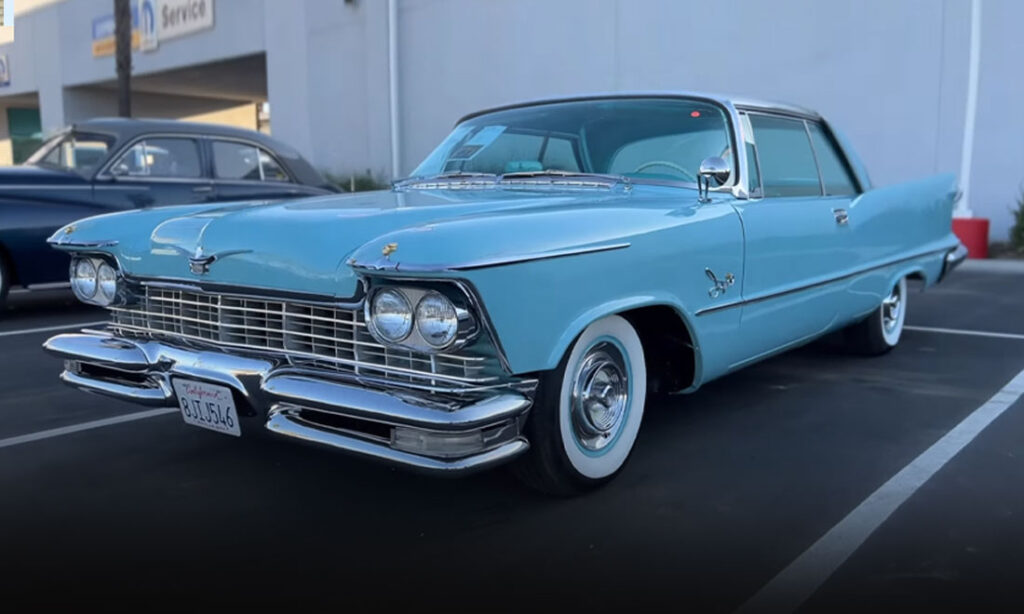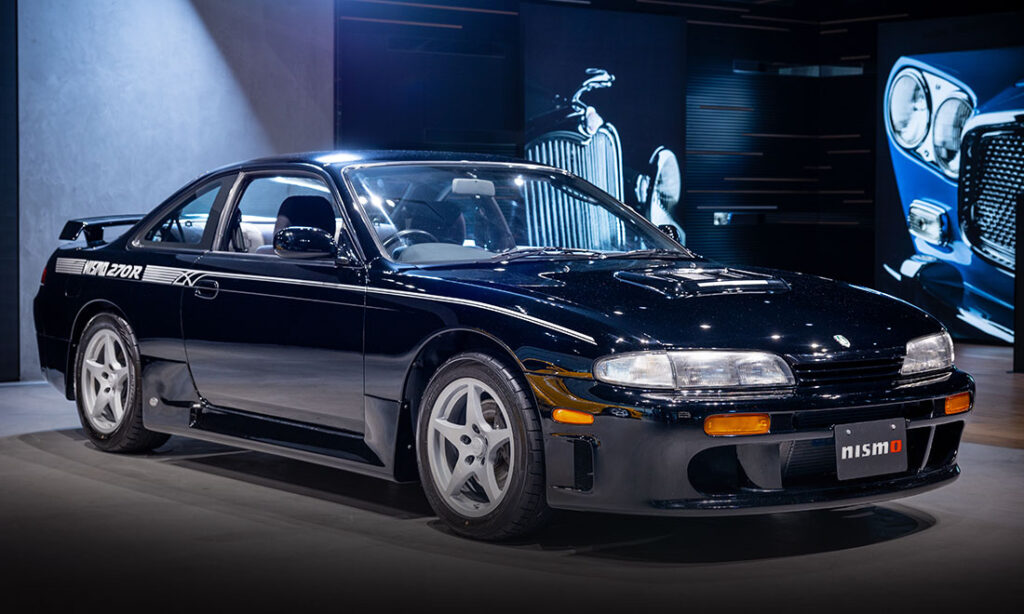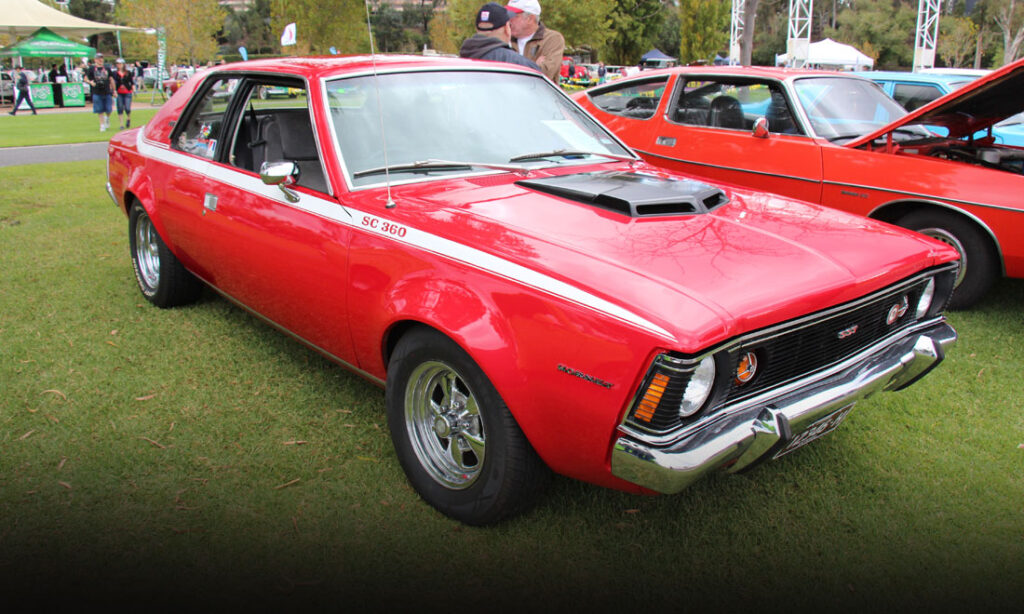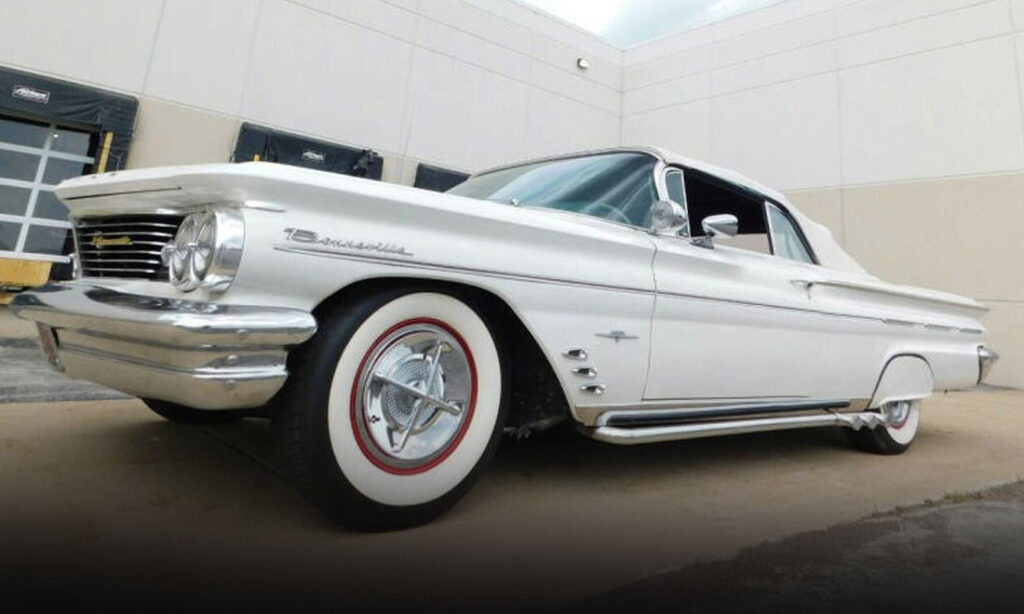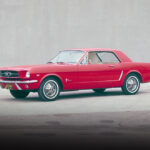The Pivotal and Potent C4 Chevrolet Corvette
The sometimes overshadowed fourth-generation Chevrolet Corvette brought America’s signature sports car into the modern age.
The Corvette’s Missing Link
There are Corvette fans and then there are C4 Corvette fans. Nostalgic for the days of crew cuts, drive-ins, and carefree indoor smoking? You’re probably a C1 or C2 kind of person. Do you dream of the automotive equivalent of a pet tiger; something beautiful, powerful, and more than a little dangerous? The C7 is the Vette for you. Tired of your neighbor extolling the virtues of mid-engine European sports cars? Pull up in a C8 and tell him to pick his jaw up off the floor.
The C4, that is the fourth generation of Chevrolet Corvette, is for iconoclasts. Not that fastest or flashiest, the C4 rests in between the “classic” Vettes of prior years (the C1 through C3) and latter Corvettes with more powerful small-block V8s and modern tech. This makes the C4 a critical and historically significant interval in the Corvette’s continued evolution.
The fourth-generation Corvette saw output climb by 200 horsepower, introduced the now-legendary ZR1 variant, and deployed all manner of modern conveniences from ABS to keyless entry. The C4 reimagined the Corvette as a thoroughly modern car, worthy of its crown as America’s greatest sports car. Below we examine its steady evolution across 13 production years.
C4 Corvette Year-By-Year
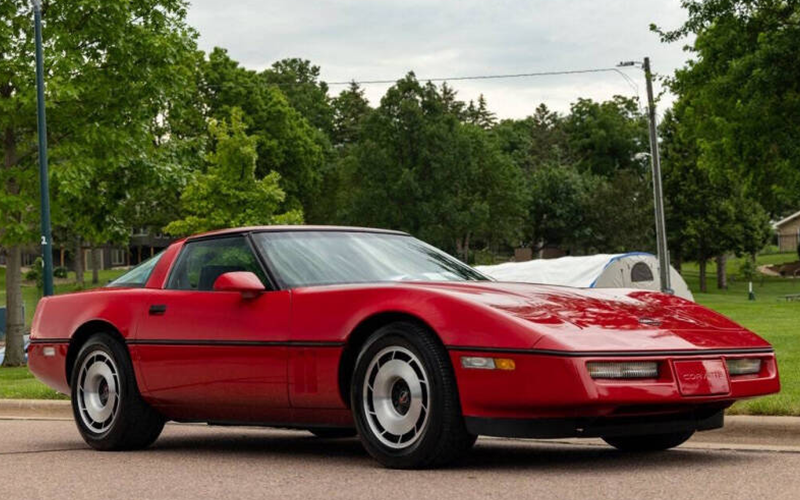
A six-month delay saw the C4 Corvette debut in March of 1983, leading Chevy to list the car as a 1984 model year, skipping ’83 entirely. The new Corvette was a ground-up redesign, a clean break from what had come before. The reimagined body was low and sleek, with a new unibody chassis design. Like prior Corvettes, the body panels were still made of light-weight fiberglass. A new digital gauge cluster flickered and flashed on the dashboard. Options included 14 choices of paint including three two-tone paint schemes, a removable Targa top, and, when equipped with the Z51 performance package, one-inch wider rear wheels.
Despite all the newness, one major item that carried over from the prior generation was the L83 350 cu.-in. (5.7L) V8. With just 205 horsepower and middling reliability, retaining the L83 wasn’t putting the C4’s best foot forward. In addition to a four-speed automatic, Chevy introduced a new 4+3 Doug Nash manual transmission with automatic overdrive which could also run into reliability issues if not scrupulously maintained. Even with these potential liabilities, the 1984 model was the C4’s best-selling year, selling over 51,000 units.
’85-’87 – C4 Corvette
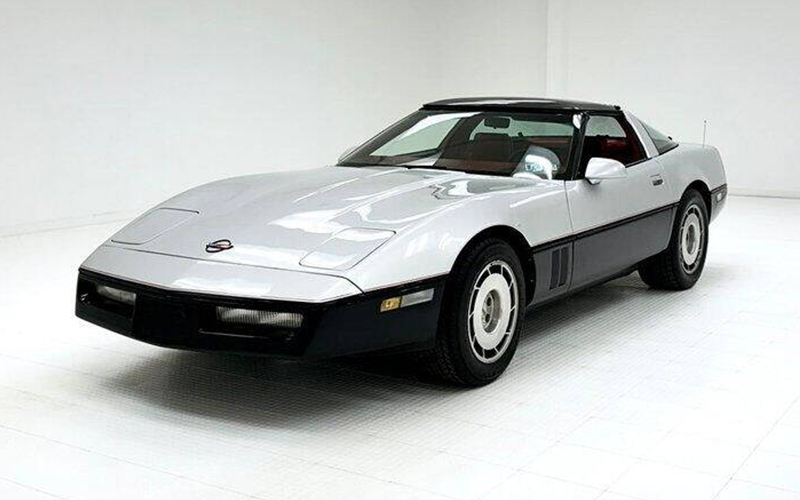
The 1985 model Corvette brought with it a major upgrade under the hood, the L98 V8 with 230 horsepower and 330 lb.-ft. of torque. Though modest on paper, the jump in horsepower greatly improved the Corvette’s performance on the street, going from 7.9 seconds zero to sixty for the 1984 car to just 5.7 seconds for the ’85 car. Chevrolet also updated the Corvette’s suspension to improve the sometimes-choppy ride quality.
A convertible option returned with the 1986 Corvette, absent since 1975. Of the 35,109 Corvettes built that year, 7,315 of them were drop tops. To mark the occasion the yellow Corvette convertible was featured as that year’s Indy 500 Pace Car. New aluminum heads increased output by five horsepower. A new federally mandated center brake light was also added, making the earlier ’84 and ’85 cars easily distinguishable from later years.
Power increased again for the Corvette in 1987. New roller valve lifters saw horsepower jump to an even 240. A new special-order twin-turbocharged version was also on offer. The B2K conversion, by Calloway Cars, provided a massive boost in output up to 382 horsepower and 465 lb.-ft of torque. Roughly 500 of the RPO optioned B2K conversions were built, making them a genuinely rare Corvette variant today.
’88-’90 – C4 Corvette

The 1988 model year Corvette received even more significant updates and changes. Exhaust system alterations allowed coupe versions equipped with the optional performance rear axle to gain a slight bump in output to 245 horsepower. The suspension system was given a thorough overhaul that included new upper and lower control arms, new steering knuckles, and new springs and shocks. The Corvette’s brakes were also updated this year. For 1989, the Corvette got new seats and a new ZF-sourced six-speed manual transmission to replace the middling 4+3 Doug Nash.
1990 saw one of the C4’s most significant additions, the introduction of the ZR1 and the new aluminum-block DOHC LT5 V8. The new engine was designed by Lotus and assembled by Mercury Marine. With a full 375 horsepower, the ZR1 took the Corvette to new heights with a zero to sixty sprint of 4.9 seconds and a quarter mile run of 13.4 seconds (some unofficial numbers offer even quicker times). This put it in direct competition with the best European sports cars of the day, quicker than a Lamborghini Countach, Ferrari Testarossa, or Porsche 911 Carrera.
The regular Corvette also improved its output to 250 horsepower for those equipped with the new rear axle ratios. A CD player was also added to the list of interior options.
’91-’96 – C4 Corvette
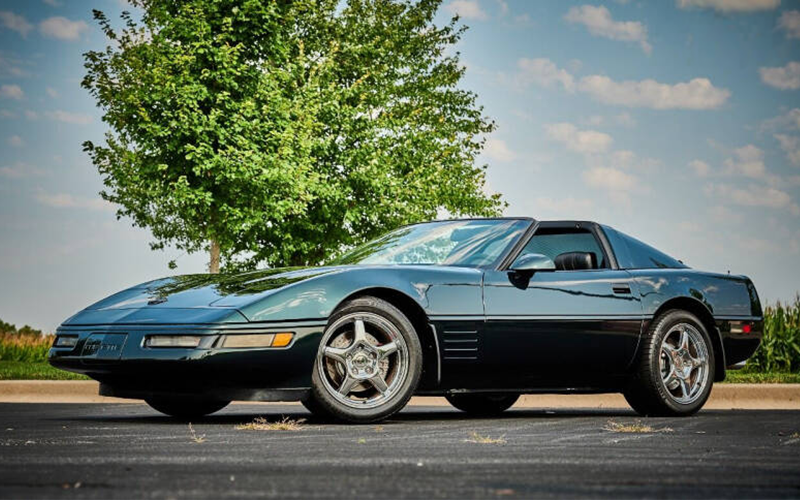
The 1991 Corvette was given a subtle visual makeover that included new squarish taillights and an integrated center brake light as well as a new bumper and new “saw blade” wheels to replace the long running “salad shooters” design.
For 1992, the Corvette received one of the fourth generation’s biggest updates, the introduction of the new LT1 V8. The LT1 produced 300 horsepower and 330 lb.-ft. of torque. It was a major improvement in power and coincided with the addition of a traction control system, the “ASR or accelerated slip regulation.”
A 40th-Aniversary Edition Corvette was released in 1993 with Ruby Red paint and optional matching upholstery. Keyless entry was also added this year. The ZR1 also made strides. New valve and cylinder heads saw horsepower peak at 405, five horse more than the rival Dodge Viper, meaning the Vette still held the crown for the most powerful American sports car.
A new four-speed automatic arrived in 1994, along with new fuel-injection and ignition systems. A passenger airbag also became standard equipment as did new sport seats and a two-spoke steering wheel design. The 1995 Corvette received minor exterior updates, including revised fender panels. Velcro was incorporated into the body paneling to reduce rattling. New, ethanol-friendly fuel injectors were also adopted in ’95.
1996 was the C4’s final model year. A new optional LT4 V8 (manual gearbox only) offered up to 330 horsepower. This same engine was offered in conjunction with the Special Edition Grand Sport, commemorating the famous C2-generation race car. The Grand Sport featured a stunning Admiral Blue paint with white center stripe. The final year of the C4 also received a Collector’s Edition version finished in Sebring Silver and sporting five-spoke ZR1-style wheels.
From the humble beginnings of the 205-horsepower L83 to the statement-making ZR1, the ever-evolving C4 provided the critical bridge from the old-school to the new-school for the imitable and indispensable Chevrolet Corvette.


